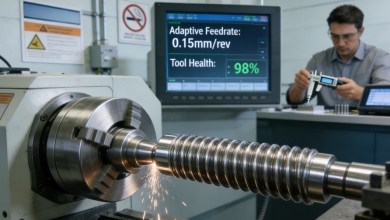Artificial Intelligence is not a new feature for supply chains. AI-enhanced tools have been used throughout supply chains to increase efficiency, reduce the impact of a worldwide worker shortage, and discover more resilient and reliable ways to move goods. The pandemic has now expedited the adoption of AI applications within the supply chain, enabling decisions that previously could have taken days or weeks to be made in hours.
The ever-increasing range of sophisticated AI-empowered supply chain technologies is being used to solve problems across a huge range of variables. From predicting shipment arrival times to providing visibility to predict and act on supply chain disruptions, AI, machine learning and data science capabilities provide organisations with a wealth of analytical data to revolutionise their operations. From cost saving and inventory optimisation, to demand forecasting and total visibility across shipments, effective use of AI can transform the supply chain from end to end.
Finding the perfect balance of human and machine
Importantly, these technologies are increasingly being used to support human-led decision-making. This symbiotic relationship will continue to evolve through 2022, with data-driven decision-making quickly becoming a vital component of modern supply chain management.
The pandemic has taught us that we cannot rely on past performance to predict future trends. In an unpredictable world, AI provides human experts with the insights and intelligence needed to manage increasingly complex logistical landscapes. This creates an ideal balance. Based on billions of specific data points, AI can be deployed to surface information that enables supply chain professionals to make balanced and informed decisions, enhancing supplier collaboration, end-to-end ETA accuracy, and order-level visibility.
Take the congestion issues at the Port of Los Angeles for example. For a brand that has always shipped into Los Angeles, accurately assessing alternative options could take weeks. They ask, should I consider a different port? What happens if I ship into the Port of Seattle and then engage train transportation for onward carriage? Or, perhaps, there is a route through the Panama Canal over to New York? A machine-learning model can quickly assess all transportation options and provide insights to logistics managers who can take action in hours, not weeks.
Bold claims call for enthusiastic skepticism
As illustrated by Gartner, the industry is now in a phase of AI adoption where the technology is robust and advanced enough to greatly enhance decision-making. Predictive analytics, for example, where AI can recognise anomalies and learn how to select carriers and preferred re-bookings with this information in real-time, is now a proven advantage. The next phase for AI is hyper-automation, where AI delivers predictive insights, automated workflow, and intelligent decision-making across all modes and regions.
However, while AI-enabled decision-making may appear a done deal, any new approach will always take time to win the industry’s trust – and rightly so. We know from the reaction to other next-generation technologies that all it takes is one bad example to regress the conversation, negate the value proposition and dampen well-placed enthusiasm.
Supply chain executives are right to balance enthusiasm with skepticism, but caution should not stymie progress. While we are not at the point where humans can be removed entirely from the decision-making process, AI offers unparalleled advantages for executives, helping to remove the mundane day-to-day and focus on high-value tasks and insights.
Cautious progress towards an automated future
However, evidence of impact, integrity, value, and resilience must be the primary considerations in adopting any new solution. As Gartner warns, “Emerging supply chain management technologies are often overhyped, and leaders must aim to fully understand the risks and opportunities associated with each new technology…Supply chain technology leaders must conduct careful due diligence to identify the right technology partner to work with on visibility projects.”
While Gartner has raised a warning flag, they also urge for more investment in advanced analytics, AI, and data infrastructure, meaning there is no doubt that supply chain organisations must continue on their path to digitialisation.
Fortunately, it appears that a balance is being struck, with half of supply chain leaders planning to invest in applications that support AI and advanced analytics capabilities within the next two years. In practice, this requires the adoption of automated, real-time decision-making alongside skilled talent that can extract the most value from developing technologies.
The global supply chain crisis is not a flash in the pan, and it is only uncertainty that is truly certain. While human talent will always remain at the core of logistical operations, supply chain leaders must now consider how AI technologies can empower human experts to make real-time, data-driven decisions to navigate this complex landscape. Only with these intelligent decision-making capabilities will companies future proof their operations against tomorrow’s challenges and build long-term resilience.



